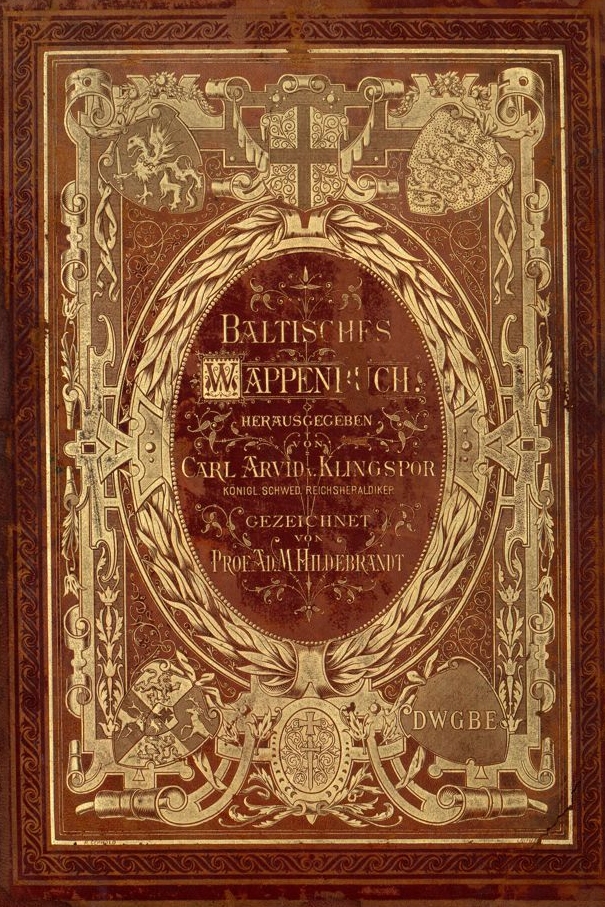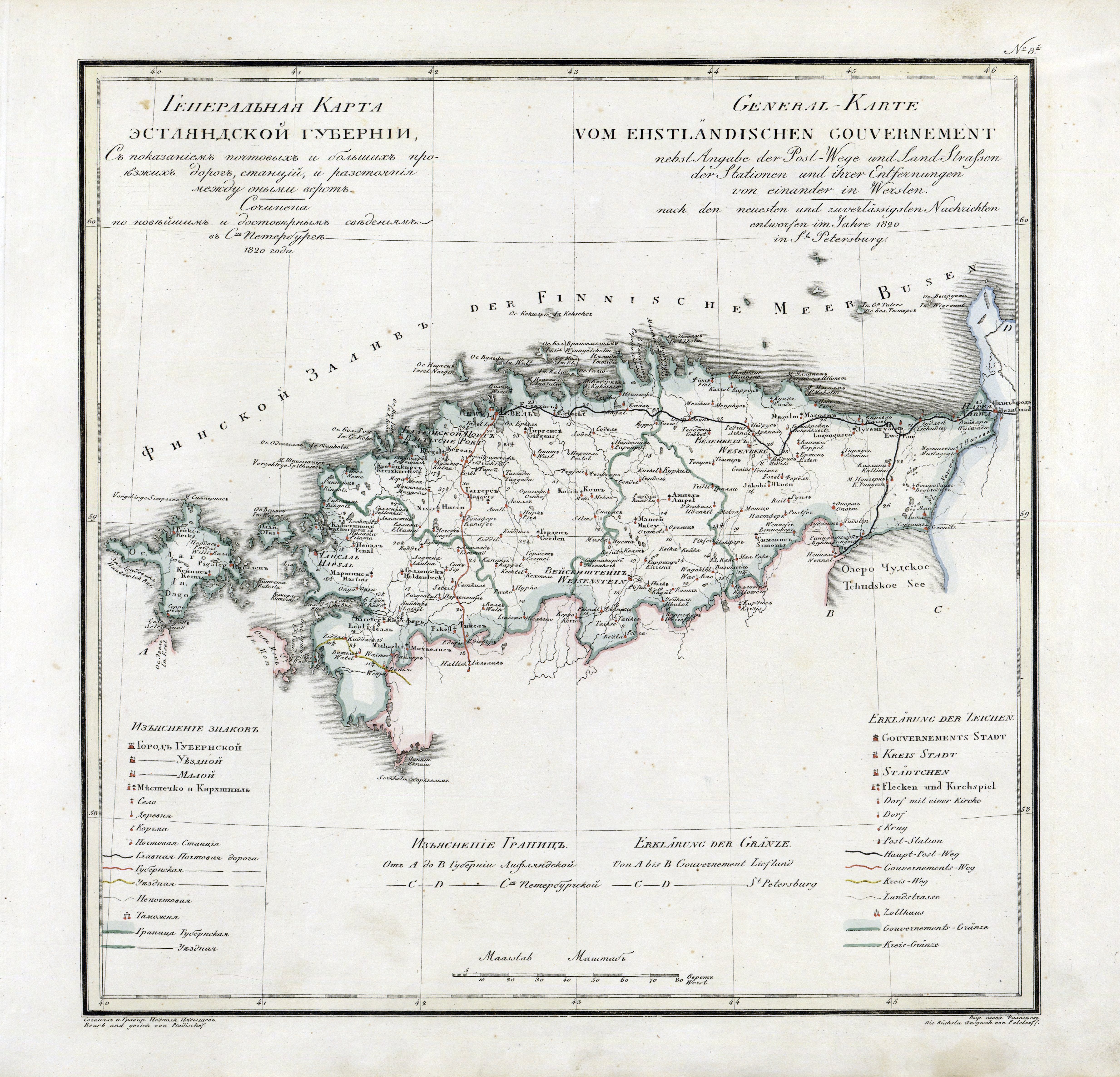|
Estonian Knighthood
The Estonian Knighthood (german: Estländische Ritterschaft, et, Eestimaa rüütelkond) was a fiefdom that operated in the northern part of modern Estonia. It was formed in 1584 by the Baltic German nobles and disbanded in 1920. Just like other Baltic knighthoods, the Estonian also had semi-autonomous privileged status in the Russian Empire. The earliest written reference of the Estonian Knighthood dates from 1252. Its origins date back to the time of Danish rule, when the northern Estonian provinces of Revala, Vironia and Harria where allied together. The process of the development of the corporation into a political entity was completed by the end of the Rule of the Teutonic Order in 1561, resulting in the control of the region and its peasant population, excluding the cities. Estonian Knighthood managed to maintain its dominant role throughout the period of Swedish and Russian rule. This meant that the practice of the Protestant-Lutheran faith (of the Augsburg Confession) w ... [...More Info...] [...Related Items...] OR: [Wikipedia] [Google] [Baidu] |
Russian Estonia
The Governorate of Estonia, also known as the Governorate of Esthonia (Pre-reformed rus, Эстля́ндская губе́рнія, r=Estlyandskaya guberniya); et, Eestimaa kubermang was a governorate in the Baltic region, along with the Livonian and Courland Governorates. It is a part of the Imperial Russian administration ('' guberniya''), which is located in modern-day northern Estonia and some islands in the West Estonian archipelago, including the islands of Hiiumaa () and Vormsi (). The Governorate was established in 1796 when Paul I's reform abolished the Viceroyalty (''namestnik''). Previously, the Reval Governorate existed under Peter I's reign from the Treaty of Nystad, which ceded territory from Sweden to the newly established Russian Empire, until its inexistence in 1783. From the 1850s until 1914, the Estonian national awakening was influenced and characterized the governorate by general modernization, the reorganization into a modern European society, an ... [...More Info...] [...Related Items...] OR: [Wikipedia] [Google] [Baidu] |
Geographic History Of Estonia
Geography (from Greek: , ''geographia''. Combination of Greek words ‘Geo’ (The Earth) and ‘Graphien’ (to describe), literally "earth description") is a field of science devoted to the study of the lands, features, inhabitants, and phenomena of Earth. The first recorded use of the word γεωγραφία was as a title of a book by Greek scholar Eratosthenes (276–194 BC). Geography is an all-encompassing discipline that seeks an understanding of Earth and its human and natural complexities—not merely where objects are, but also how they have changed and come to be. While geography is specific to Earth, many concepts can be applied more broadly to other celestial bodies in the field of planetary science. One such concept, the first law of geography, proposed by Waldo Tobler, is "everything is related to everything else, but near things are more related than distant things." Geography has been called "the world discipline" and "the bridge between the human and th ... [...More Info...] [...Related Items...] OR: [Wikipedia] [Google] [Baidu] |
Estonian Nobility
Estonian may refer to: * Something of, from, or related to Estonia, a country in the Baltic region in northern Europe * Estonians, people from Estonia, or of Estonian descent * Estonian language * Estonian cuisine * Estonian culture See also * * Estonia (other) * Languages of Estonia * List of Estonians This is a list of notable Estonians. Architects * Andres Alver (born 1953) *Dmitri Bruns (1929–2020) * Karl Burman (1882–1965) * Eugen Habermann (1884–1944) *Georg Hellat (1870–1943) *Otto Pius Hippius (1826–1883) * Erich Jacoby (1885� ... {{Disambiguation Language and nationality disambiguation pages ... [...More Info...] [...Related Items...] OR: [Wikipedia] [Google] [Baidu] |
Baltic Nobility
Baltic German nobility was a privileged social class in the territories of today's Estonia and Latvia. It existed continuously since the Northern Crusades and the medieval foundation of Terra Mariana. Most of the nobility were Baltic Germans, but with the changing political landscape over the centuries, Polish, Swedish and Russian families also became part of the nobility, just as Baltic German families re-settled in locations such as the Swedish and Russian Empires. The nobility of Lithuania is for historical, social and ethnic reasons separated from the German-dominated nobility of Estonia and Latvia. History This nobility was a source of officers and other servants to Swedish kings in the 16th and particularly 17th centuries, when Couronian, Estonian, Livonian and the Oeselian lands belonged to them. Subsequently Russian Tsars used Baltic nobles in all parts of local and national government. Latvia in particular was noted for its followers of Bolshevism and the latter were ... [...More Info...] [...Related Items...] OR: [Wikipedia] [Google] [Baidu] |
Saaremaa Knighthood
Saaremaa is the largest island in Estonia, measuring . The main island of Saare County, it is located in the Baltic Sea, south of Hiiumaa island and west of Muhu island, and belongs to the West Estonian Archipelago. The capital of the island is Kuressaare, which in January 2018 had 13,276 inhabitants. The whole island had a recorded population in January 2020 of 31,435. Etymology In old Scandinavian sources, Saaremaa is called ''Eysysla'' and in the Icelandic Sagas ''Eysýsla'' (Old Norse: ), meaning "the district (land) of island". The island is called ''Saaremaa'' in Estonian, and in Finnish ''Saarenmaa''—literally "isle land" or "island land",Toomse, Liine. "10 Estonian Islands You Should Visit." http://www.traveller.ee/blog/tallinn/10-estonian-islands-you-should-visit. Retrieved 8 March 2016. i.e. the same as the Scandinavian name for the island. The old Scandinavian name is also the origin of the island's name in Danish ''Øsel'', German and Swedish ''Ösel'', Gutnish ... [...More Info...] [...Related Items...] OR: [Wikipedia] [Google] [Baidu] |
Curonian Knighthood
Curonian may refer to: * Curonian language * Curonians, or Kurs, a Baltic tribe in present-day western Latvia and Lithuania * from Curonia, Latin for Courland See also * Curonian Lagoon * Curonian Spit The Curonian (Courish) Spit ( lt, Kuršių nerija; russian: Ку́ршская коса́ (Kurshskaya kosa); german: Kurische Nehrung, ; lv, Kuršu kāpas) is a long, thin, curved sand-dune spit that separates the Curonian Lagoon from the Balti ... / Courish Spit {{dab Language and nationality disambiguation pages ... [...More Info...] [...Related Items...] OR: [Wikipedia] [Google] [Baidu] |
Livonian Knighthood
The Livonian Knighthood (german: Livländische Ritterschaft, et, Liivimaa rüütelkond, lv, Livonijas bruņniecība) was a fiefdom that existed in Livonia (now Southern Estonia and Northern Latvia). It was formed in 1561 by Baltic German nobles and disbanded in 1917 in Estonia, and in 1920 in Latvia. Like other Baltic knighthoods, the Livonian also had semi-autonomous privileged status in the Russian Empire. History Within the individual territories Old Livland the vassal genders joined forces to defend and maintain their rights and possessions into knighthoods. These corporate organizations were already provided with sovereign rights in the 14th century and were officially recognized. The privileges of the knighthood were each confirmed by changing sovereigns, so happened in 1561 by the King of Poland Sigismund II August, 1629 by Gustav II Adolf, the king of Sweden, and in 1710 by the Russian Tsar Peter I. Through the agricultural legislation of the years 1816 to 1819, th ... [...More Info...] [...Related Items...] OR: [Wikipedia] [Google] [Baidu] |
Governorate Of Estonia
The Governorate of Estonia, also known as the Governorate of Esthonia (Pre-reformed rus, Эстля́ндская губе́рнія, r=Estlyandskaya guberniya); et, Eestimaa kubermang was a governorate in the Baltic region, along with the Livonian and Courland Governorates. It is a part of the Imperial Russian administration ('' guberniya''), which is located in modern-day northern Estonia and some islands in the West Estonian archipelago, including the islands of Hiiumaa () and Vormsi (). The Governorate was established in 1796 when Paul I's reform abolished the Viceroyalty (''namestnik''). Previously, the Reval Governorate existed under Peter I's reign from the Treaty of Nystad, which ceded territory from Sweden to the newly established Russian Empire, until its inexistence in 1783. From the 1850s until 1914, the Estonian national awakening was influenced and characterized the governorate by general modernization, the reorganization into a modern European society, ... [...More Info...] [...Related Items...] OR: [Wikipedia] [Google] [Baidu] |
Estonian Knighthood House
The Estonian Knighthood House (Estonian: ''Eestimaa rüütelkonna hoone'', German: ''Haus der Estländischen Ritterschaft'') is a building in Toompea, the upper part of Vanalinn, the historic inner town of Tallinn, the capital of Estonia. Its address is Kiriku plats (Dome Square) 1. The Dome Church is situated at the same square. History Estonia was occupied by the Livonian Brothers of the Sword, a religious order of German nobles, in the 13th century. Since then German nobles were the actual rulers in Estonia. They stayed in power when Estonia was occupied by Sweden in the 17th century and by the Russian Empire in the 18th century. Apart from a few Russians, all magistrates were German nobles. As large landowners they also possessed large parts of the Estonian soil. There were also many German nobles who opted for a career in the Imperial Russian Army. The German nobles in Estonia were united in the Estonian Knighthood. The Estonian Knighthood House was the building where the ... [...More Info...] [...Related Items...] OR: [Wikipedia] [Google] [Baidu] |
Swedish Estonia
Estonia under Swedish rule (1561–1710) signifies the period of time when large parts of the country, and after 1645, entire present-day Estonia, were under Swedish rule. In the wake of the breakup of the State of the Teutonic Order, the Baltic German local nobility in the areas of Harrien (Harjumaa) and Wierland (Virumaa), as well as the city of Reval (Tallinn) in June 1561 (and somewhat later Jerwen ( Järvamaa)) asked for and were granted protection by the Swedish king Eric XIV, leading to Swedish involvement in the Livonian War. At the conclusion of hostilities in 1583, Sweden was in control of the northern parts of modern Estonia and Dagö (Hiiumaa island); the Duchy of Estonia was created from this territory. Following renewed wars between Poland and Sweden, the southern parts of present-day Estonia (then Livonia) were incorporated into Sweden by the Treaty of Altmark in 1629. Sweden also conquered the island of Ösel (Saaremaa) from Denmark, and were thus in control o ... [...More Info...] [...Related Items...] OR: [Wikipedia] [Google] [Baidu] |
Fee (feudal Tenure)
A fief (; la, feudum) was a central element in medieval contracts based on feudal law. It consisted of a form of property holding or other rights granted by an overlord to a vassal, who held it in fealty or "in fee" in return for a form of feudal allegiance, services and/or payments. The fees were often lands, land revenue or revenue-producing real property like a watermill, held in feudal land tenure: these are typically known as fiefs or fiefdoms. However, not only land but anything of value could be held in fee, including governmental office, rights of exploitation such as hunting, fishing or felling trees, monopolies in trade, money rents and tax farms. There never did exist one feudal system, nor did there exist one type of fief. Over the ages, depending on the region, there was a broad variety of customs using the same basic legal principles in many variations. Terminology In ancient Rome, a "benefice" (from the Latin noun , meaning "benefit") was a gift of land ( ... [...More Info...] [...Related Items...] OR: [Wikipedia] [Google] [Baidu] |





